Common sights when inspecting your honey bee hive, along with treatment advice.
MCBA also recommends RECORDING what you see in your hives so you can track their health, and trace back where things may have started to go wrong. CLICK HERE so see some sample inspection forms.
| Picture | Description | What You've Got | Threat Level | Action |
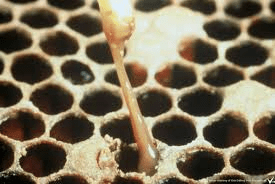 | Ropy, stringy, brown goop that used to be larvae and pupae; perforated worker brood cells, putrid, musty smell. | American foulbrood: contagious, very harmful, spore-forming bacteria that can easily spread and kill entire apiaries | URGENT! | Frames with AFB symptoms should be removed immediately and disposed of, preferably by burning. All equipment that may have come into contact with AFB should be sanitized with bleach. It may be necessary to burn the entire hive body of all infected colonies because AFB is so contagious and flagrant. Also, consider treating with an antibiotic such as Terramycin, but first you will need a prescription from a veterinarian |
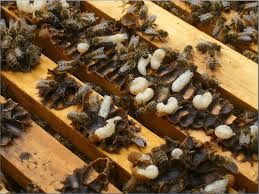 | White slug-looking creatures, squirming around outside of cells - on topbar or under hive. | Drone bee larvae. Workers build larger than normal cells in the space between the bottom of a frame and the top of the frame below it. These are used to raise drones (males) which need bigger cells. When you lifted a box, the cells break and the developing larvae tumble out. | Relax | Nothing. Let the bees clean it up - they may recycle the fluids and protein. If the drone larvae fall to the ground, remove them so they don't attract animals/insects that like to eat bees! |
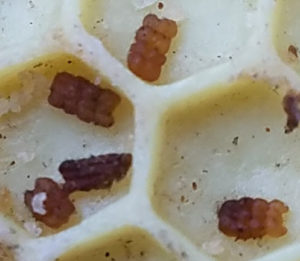 | Strings of tiny brown rectangles | Wax Moth larvae feces. | Maintenance Needed | A few wax moth larvae are not uncommon, but the problem can grow quickly. Thoroughly inspect each frame in your hive. See Wax Moth Larvae for remedial actions. |
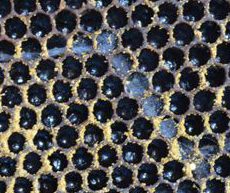 | Holes in wax with silky threads | Wax Moth larvae. They chew up the wax in the brood nest and leave behind a trail of silk and feces. They can spin cocoons and pupate in the hive into adult moths | Maintenance Needed, possibly URGENT! | If wax moth larvae are seen, the frames on which they are seen should be frozen and most of the wax scraped off to ensure the larvae are dead and removed from the hive. Frames completely covered in wax moth larvae silk and feces should be either thoroughly scraped or just discarded. While storing equipment for the winter, it should be stored with moth crystals to prevent moths from infesting your equipment. |
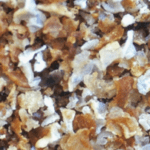 | Piles of shredded wax under the hive suddenly appearing. | Symptom of robbing. When bees chew through the cap of a cell filled with honey (or when a new adult is emerging from its brood cell) tiny grains of wax fall on the bottom board or on the ground. Normally, bees access their stored honey methodically. However, when bees from another colony invade, they want as much honey as they can grab and tear through many caps all at once, creating a rain of tiny wax pieces. | URGENT! | Make certain your colony has enough remaining honey stores to recover. They could be running on empty. To prevent further damage, install a robbingt screen to keep out invaders. |
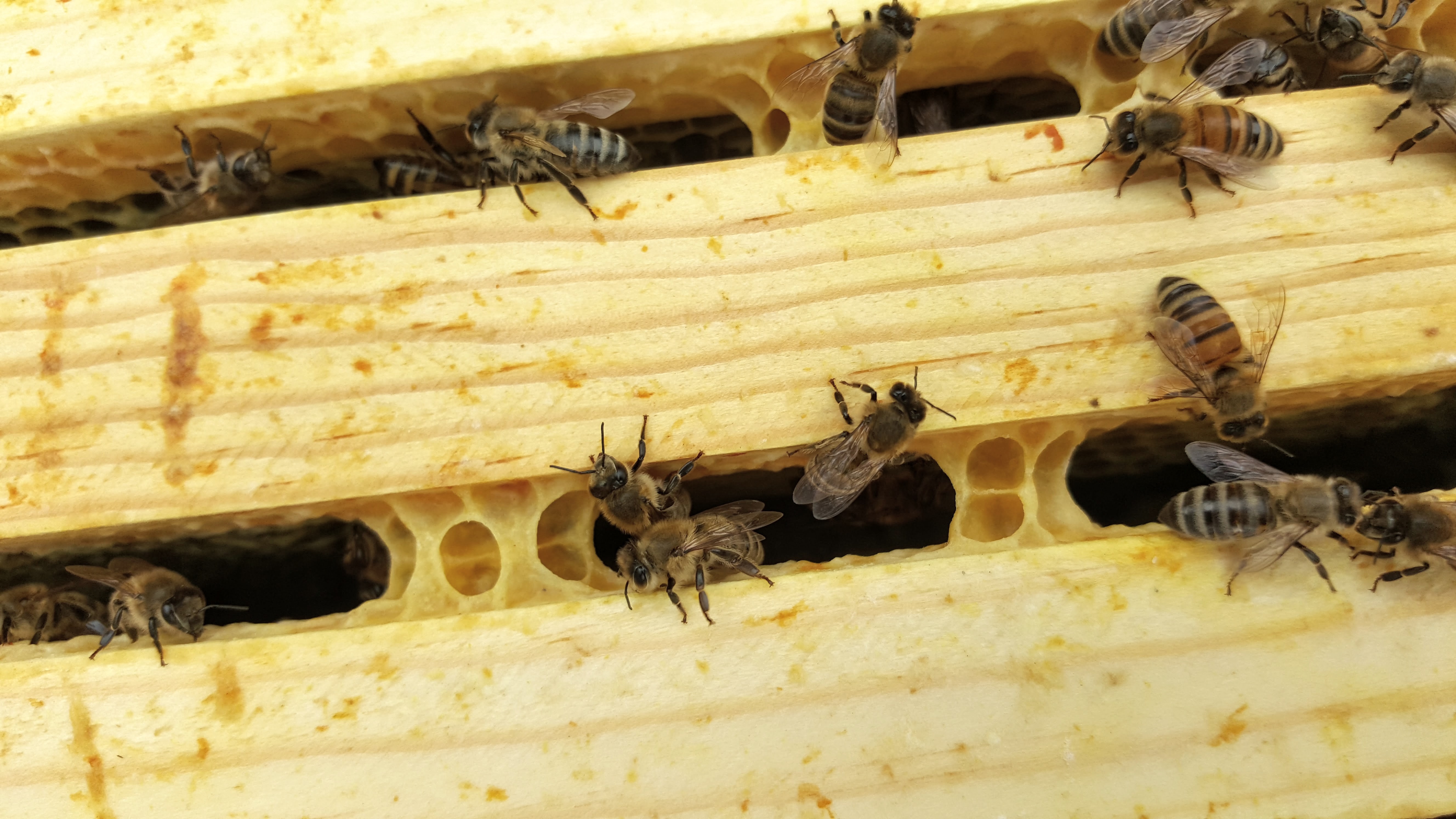 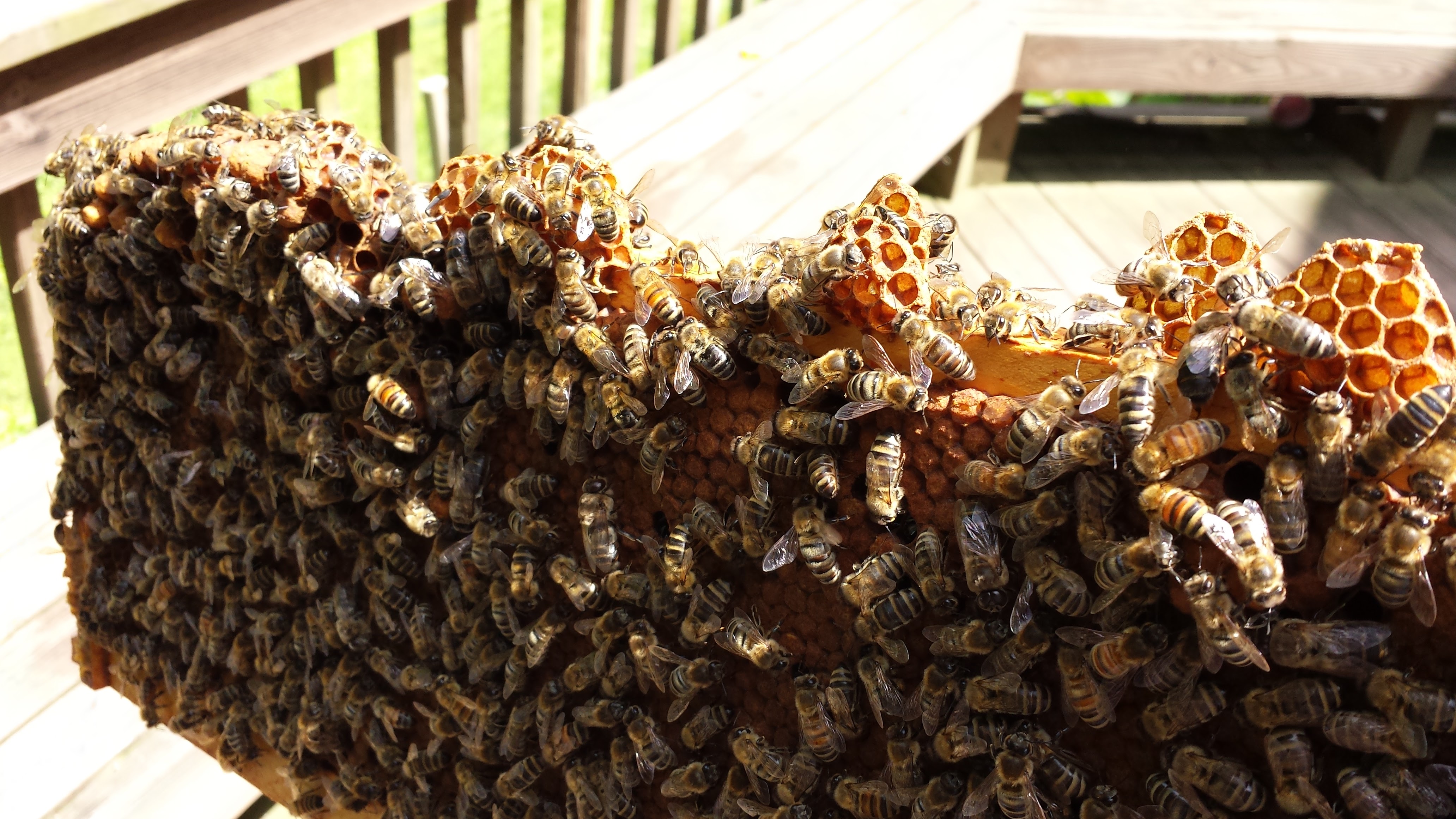 | Wax comb built where you don't want it. | Burr comb. This is just extra wax that the bees are drawing out because they feel that they've run out of room to draw wax on frames, or want to fill in a gap. | Relax | This is a good indicator that your colony is productive. The burr comb should always be scraped out with the hive tool to make sure the hive doesn't get too messy and cluttered. Consider adding a super to give them some more space to draw wax on actual frames. |
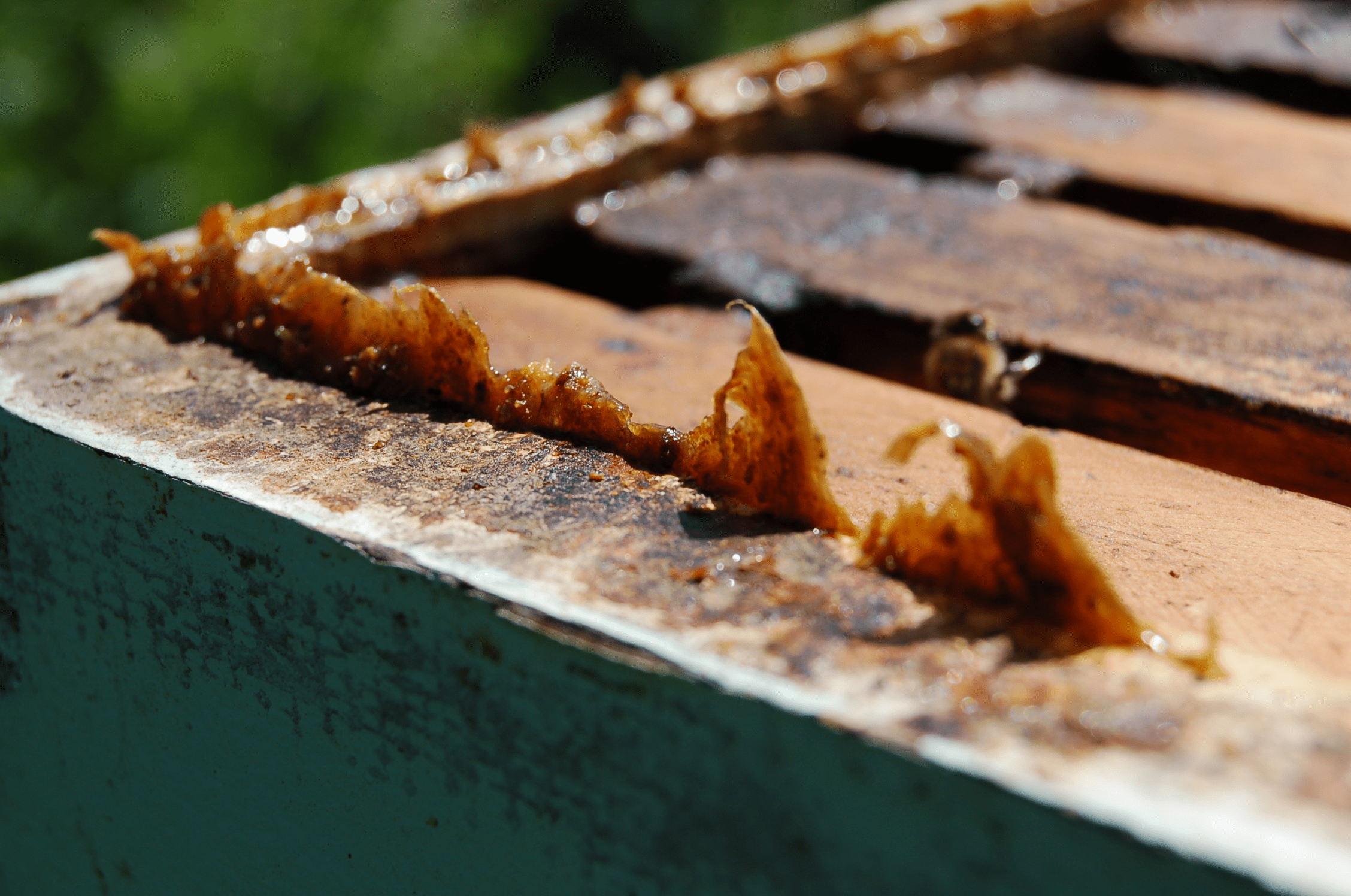 | Caramel-dark brown sticky substance | Propolis. This is tree resins mixed with bee saliva, beeswax, and other botanical sources bees use to seal crevices. | Relax | Propolis is an essential tool for honey bees to construct their colonies. No action necessary |
 | Dead, deflated looking, curled larvae in UNCAPPED cells, and sometimes under perforated caps. | EUROPEAN Foul Brood disease (a bacterial infection) | URGENT! | The only product labeled for control of EFB is Terramycin (Oxytetracycline hydrochloride) which needs to be prescribed by a Vet. Requires 3 treatments, 5-7 days apart. More Info |
 | Domed cells scattered across a brood frame | Bees build these domed caps because inside the cell is a drone larvae, which needs more growing space than a worker bee. But, the queen should not have laid a drone egg in a worker-size cell, so this means she is running out of sperm stored sperm from her mating flight(s). She can no longer keep the colony populated. | URGENT! | Requeen |
